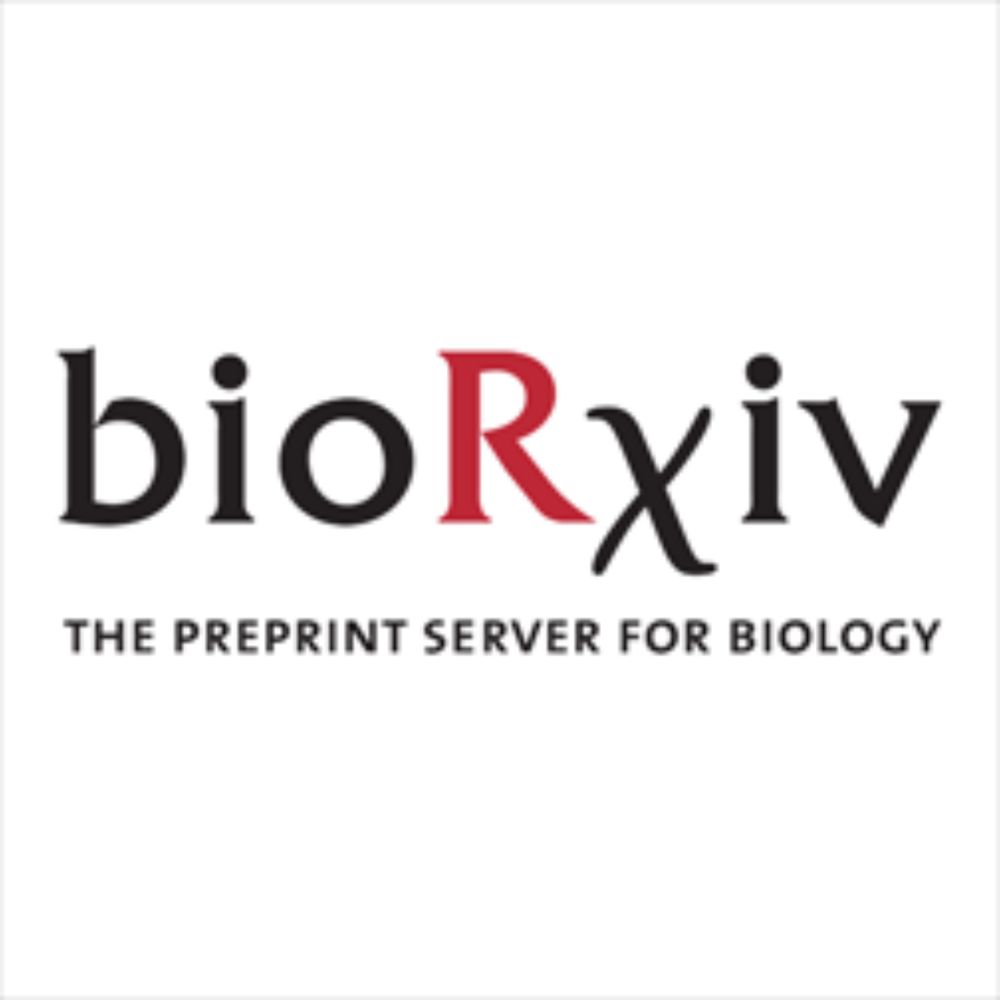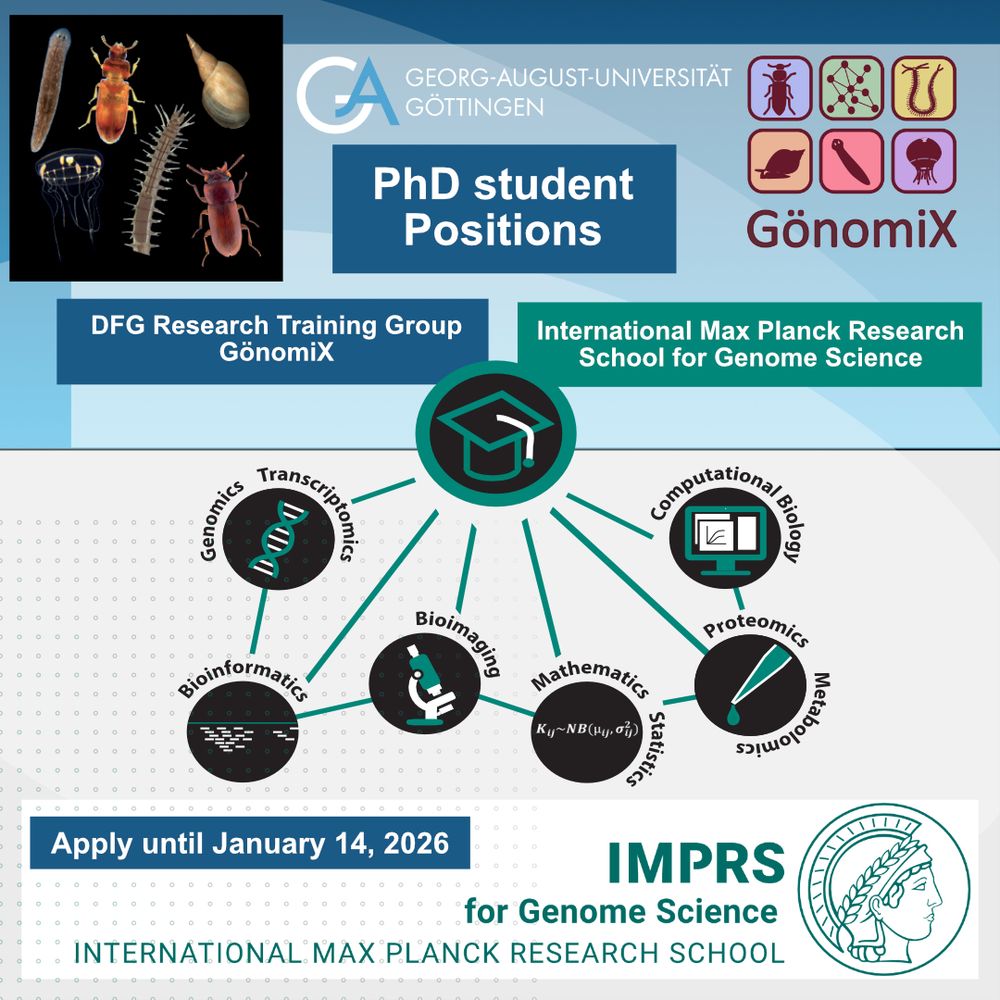
Doctoral hat surrounded by icons representing genome science fields: math, bioimaging, genomics, bioinformatics & more. Logos for Uni Göttingen, GönomiX & IMPRS-GS.
Want to shape the future of genome science? 🧬 PhD positions available at Max Planck Institute & Uni Göttingen (IMPRS-GS/GönomiX)! Join a vibrant, interdisciplinary research community. Apply by Jan 14, 2026: www.uni-goettingen.de/de/applicati... #GenomeScience #Research
28.11.2025 12:23 — 👍 6 🔁 5 💬 0 📌 0

We're very excited to welcome Dr. @sumrubayin.bsky.social from the @gurdoninstitute.bsky.social onto the next episode of the podcast! 🎉
Her lab studies the mouse #cerebellum to better understand the regulation of #neural stem cell behavior. 🧠
10.11.2025 21:46 — 👍 14 🔁 8 💬 0 📌 1
Our latest paper on comparative analysis of HiChIP data is now online! HiChIP is one of the most useful/practical assays to profile 3D genome organization and chromatin loops but has its challenges in the data analysis especially when it comes to comparative analysis.
04.11.2025 22:58 — 👍 11 🔁 3 💬 1 📌 0

Frontiers in Stem Cell Innovation 2026
Join leading academics and industry professionals exploring cutting-edge stem cell technologies and disease modelling for drug discovery
🚨 Exciting conference for stem cell aficionados!
‘Frontiers in Stem Cell Innovation’ will bring together experts in stem cell biology from academia & industry to discuss key developments as well as challenges in regenerative medicine and disease modelling.
fisci2026.eventbrite.co.uk
Please repost 🙏
01.11.2025 20:56 — 👍 4 🔁 5 💬 1 📌 0

Happy to share our latest publication, in which we show that the arrangement of nucleosomes around CTCF sites contributes to higher-order organisation of chromatin into TADs: www.embopress.org/doi/full/10....
27.10.2025 11:49 — 👍 71 🔁 31 💬 0 📌 2

bioRxiv - An unbiased survey of distal element-gene regulatory interactions with direct-capture targeted Perturb-seq
New preprint from our lab!
What can we learn about the properties of gene regulatory elements by CRISPR’ing a random set of accessible sites in human cells?
Find out here: www.biorxiv.org/content/10.1...
👇
1/
19.09.2025 03:03 — 👍 57 🔁 17 💬 1 📌 1

Thrilled to share that our Group Leader Prof. Azim Surani, together with Prof. Davor Solter, has been awarded the 2026 Paul Ehrlich & Ludwig Darmstaedter Prize 🎉 for discovering genomic imprinting—a breakthrough that reshaped genetics and launched modern epigenetics.
18.09.2025 13:20 — 👍 37 🔁 13 💬 0 📌 0
Most read, I hear!
Here is your chance to read what @mariekeoudelaar.bsky.social and I had in mind when writing this together.
10.09.2025 13:21 — 👍 11 🔁 4 💬 0 📌 0

Dear Fly Community,
In May 2025, the NIH terminated all grant funding to Harvard University, including the NHGRI grant that supported FlyBase. This grant also funded FlyBase teams at Indiana University (IU) and the University of Cambridge (UK), and as a result, their subawards were also canceled.
The Cambridge team has secured support for one to two years through generous donations from the European fly community, emergency funding from the Wellcome Trust, and support from the University of Cambridge. At IU, funding has been secured for one year thanks to reserve funds from Thom Kaufman and a supplement from ORIP/NIH to the Bloomington Drosophila Stock Center (BDSC).
Unfortunately, the situation at Harvard is far more critical. Harvard University had supported FlyBase staff since May but recently denied a request for extended bridge funding. As a result, all eight employees (four full-time and four part-time) were abruptly laid off, with termination dates ranging from August to mid-October depending on their positions. In addition, our curator at the University of New Mexico will leave her position at the end of August. This decision came as a shock, and we are urgently pursuing all possible funding options.
To put the need into perspective: although FlyBase is free to use, it is not free to make. It takes large teams of people and millions of dollars a year to create FlyBase to support fly research (the last NHGRI grant supported us with more than 2 million USD per annum).
To help sustain FlyBase operations, we have been reaching out to you to ask for your support. We have set up a donation site in Cambridge, UK, to which European labs have and can continue to contribute, and a new donation site at IU to which labs in the US and the rest of the world can contribute. We urge researchers to work with their grant administrators to contribute to FlyBase via these sites if at all possible, as more of the money will go to FlyBase. However, we appreciate that some fu…

https://wiki.flybase.org/wiki/FlyBase:Contribute_to_FlyBase
Our immediate goals are:
1. To maintain core curation activities and keep the FlyBase website online
2. To complete integration with the Alliance of Genome Resources (The Alliance).
Integration with the Alliance is essential for FlyBase’s long-term sustainability. For nearly a decade, NHGRI/NIH has supported the unification of Model Organism Databases (MODs) into the Alliance, which we aim to achieve by 2028. Therefore, securing bridge funding to sustain FlyBase over the next three years is crucial for successful integration and the long-term access to FlyBase data.
At present, our remaining funds will allow us to keep the FlyBase website online for approximately one more year. Beyond that, its future is uncertain unless new funding is secured. We will, of course, continue pursuing additional grant opportunities as they arise.
Given the uncertainty of future NIH or alternative funding sources, we are relying on the Fly community for support. Your contributions will directly help us retain the staff needed to complete this transition and to secure ongoing fly data curation into the Alliance beyond 2028.
We at FlyBase are incredibly grateful for the outpouring of support from the community during this challenging time. Your encouragement has strengthened our resolve and underscores how vital this resource remains to Drosophila research worldwide.
Sincerely,
The FlyBase Team
The community of Drosophila researchers is amazing, mutually supportive and collaborative. Right now a key resource for our community, @flybase.bsky.social , is threatened by the cancellation of its NIH grant and is seeking community help in raising short term funds 1/n 🧪 please share
23.08.2025 12:18 — 👍 150 🔁 127 💬 1 📌 6
H3K4me3 amplifies transcription at intergenic active regulatory elements
A biweekly scientific journal publishing high-quality research in molecular biology and genetics, cancer biology, biochemistry, and related fields
New paper on the role of H3K4me3 at enhancers! We (led by Haoming Yu) used dCas9 epigenome editing to add H3K4me3 to intergenic enhancers. This was (1) sufficient to turn up transcription at open, active regions and (2) has no effect on target gene transcription. genesdev.cshlp.org/content/earl...
20.08.2025 01:28 — 👍 84 🔁 33 💬 3 📌 1
Great honor to be nominated as one of the top 10 Falling Walls Foundation Science Breakthroughs of the Year 2025 in the Life Sciences. A big thank you to @ovarylab.bsky.social & @tabeamarx.bsky.social for their outstanding contributions, & to everyone else who helped move this project forward.
14.08.2025 11:33 — 👍 8 🔁 1 💬 0 📌 0
🤩 Very excited to share our new work! We have derived euploid and aneuploid trophoblast organoids and extra-embryonic mesoderm cell lines from early human embryos. In doing so, we have characterised the tissue requirements for their specification. If you want to know more, continue reading….
09.08.2025 08:03 — 👍 37 🔁 11 💬 1 📌 0
Check out this exciting meeting and register! Fantastic line-up of speakers on cell biology of the nucleus and a great venue 🔥
01.08.2025 06:42 — 👍 28 🔁 16 💬 0 📌 1
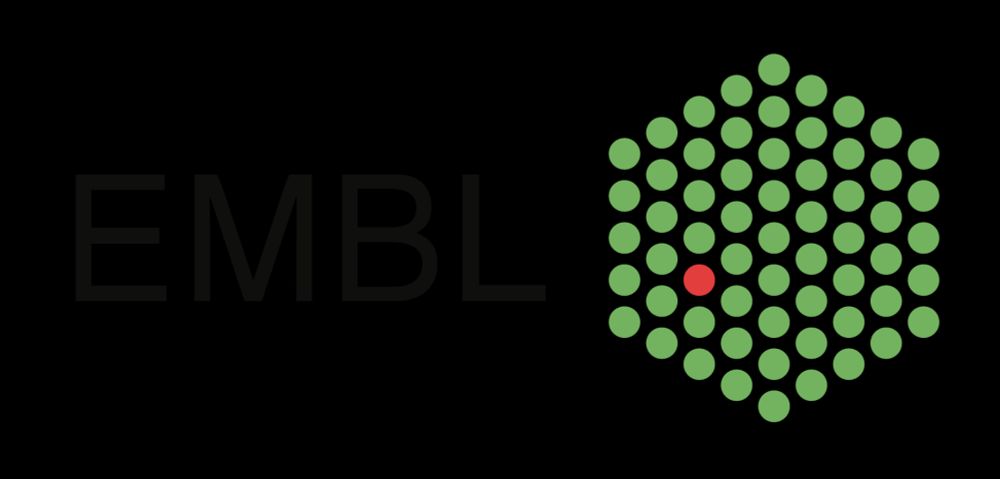
Group Leader - Genome Biology Unit
Are you ready to lead groundbreaking research in Genome Biology? Join us at EMBL! We are seeking a motivated scientist to lead an independent research group addressing exciting and original biological...
To all post-docs: The Genome Biology dept @embl.org
has an Independent faculty position. Fantastic place to set up your lab –great package: core funding, fantastic Ph.D. students, cutting edge core facilities & great colleagues. Closing date Sept 19th
embl.wd103.myworkdayjobs.com/en-US/EMBL/j...
30.07.2025 13:41 — 👍 192 🔁 226 💬 0 📌 9
Delighted to see this work published! Congrats to Chris Todd and everyone involved - happy to have been part of the team.
30.07.2025 08:54 — 👍 5 🔁 1 💬 0 📌 0
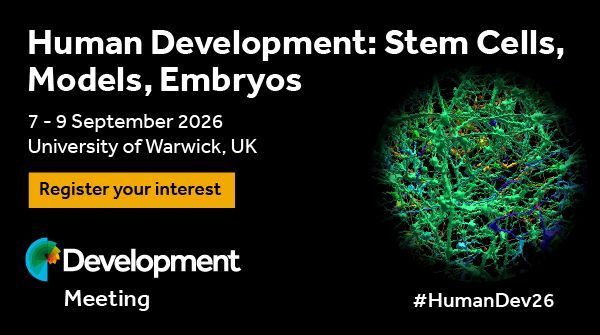
Human Development: Stem Cells, Models, Embryos. 7 - 9 September 2026 University of Warwick, UK. Resgiter your interest. #HumanDev26. Image credit: Susanna Narkilahti, Tampere University, Finland
Save the Date!
Development has teamed up with the Wellcome-funded consortium the Human Developmental Biology Initiative to co-organise a meeting on #HumanDevelopment.
📅7 - 9 Sep 2026
📍University of Warwick, UK
Register your interest for #HumanDev26: www.biologists.com/meetings/dev...
11.07.2025 07:46 — 👍 29 🔁 14 💬 0 📌 3
Please pread the word.
We have just launched the Hubrecht International PhD Program (HIPP).
Are you looking for a PhD position in molecular and developmental biology or related subject in an international, very supportive and collaborative environment?
Then apply to the HIPP!! 👇
10.07.2025 18:56 — 👍 24 🔁 18 💬 0 📌 0
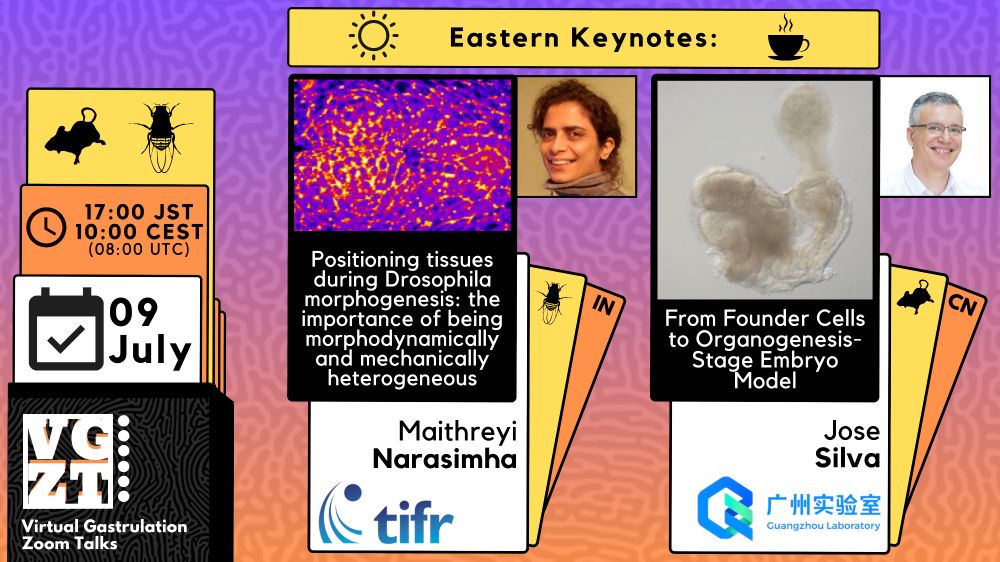
Join the VGZT Eastern KEYNOTE lecture ☀️☕ TOMORROW
🗓️ Wednesday July 09
⏰ 13:30 IST / 17:00 JST / 8:00 UTC / 10:00 CET
Featuring:
1) Maithreyi Narasimha
👉Positioning tissues during Drosophila morphogenesis
Jose Silva @josesilvalab.bsky.social
👉From founder cells to organogenesis-stage embryo model
08.07.2025 10:54 — 👍 11 🔁 5 💬 0 📌 1

GSCN Conference (15. - 17. Oct 2025 in Munich)! Extended Deadline: 21 July 2025. Submit your abstract for an oral presentation & get an early bird ticket by 21.7.! Save on registration and secure your spot in the scientific program. Register and submit your abstract here: ➙ gscn-conferences.org
07.07.2025 12:12 — 👍 1 🔁 4 💬 0 📌 0
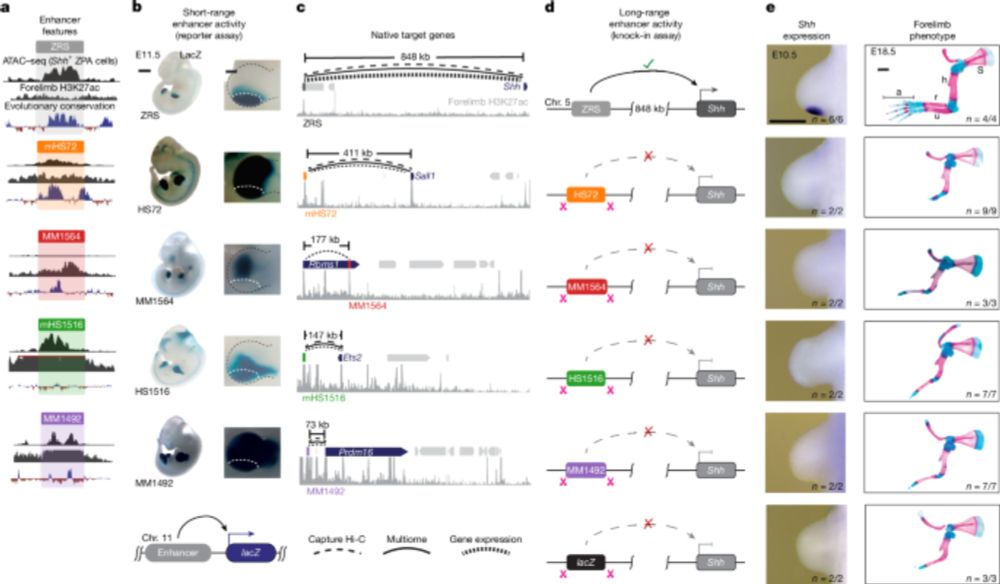
Range extender mediates long-distance enhancer activity - Nature
The REX element is associated with long-range enhancer–promoter interactions.
Our paper describing the Range Extender element which is required and sufficient for long-range enhancer activation at the Shh locus is now available at @nature.com. Congrats to @gracebower.bsky.social who led the study. Below is a brief summary of the main findings www.nature.com/articles/s41... 1/
02.07.2025 16:17 — 👍 186 🔁 90 💬 10 📌 9
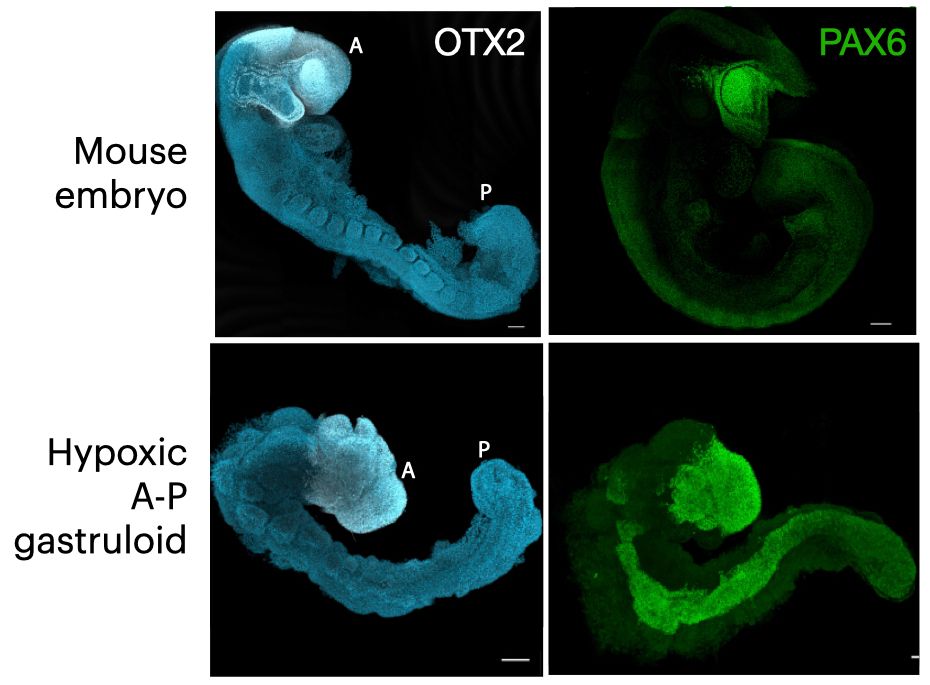
⚠️ I am really excited to share the work of Anastasios Balaskas, an excellent PhD candidate in the lab, with the wider world. Tasos made a significant advance: generating a stem cell-based embryo model that contains both posterior and anterior neural tissues of the late-stage gastrulating embryo.
23.06.2025 07:51 — 👍 124 🔁 45 💬 4 📌 7
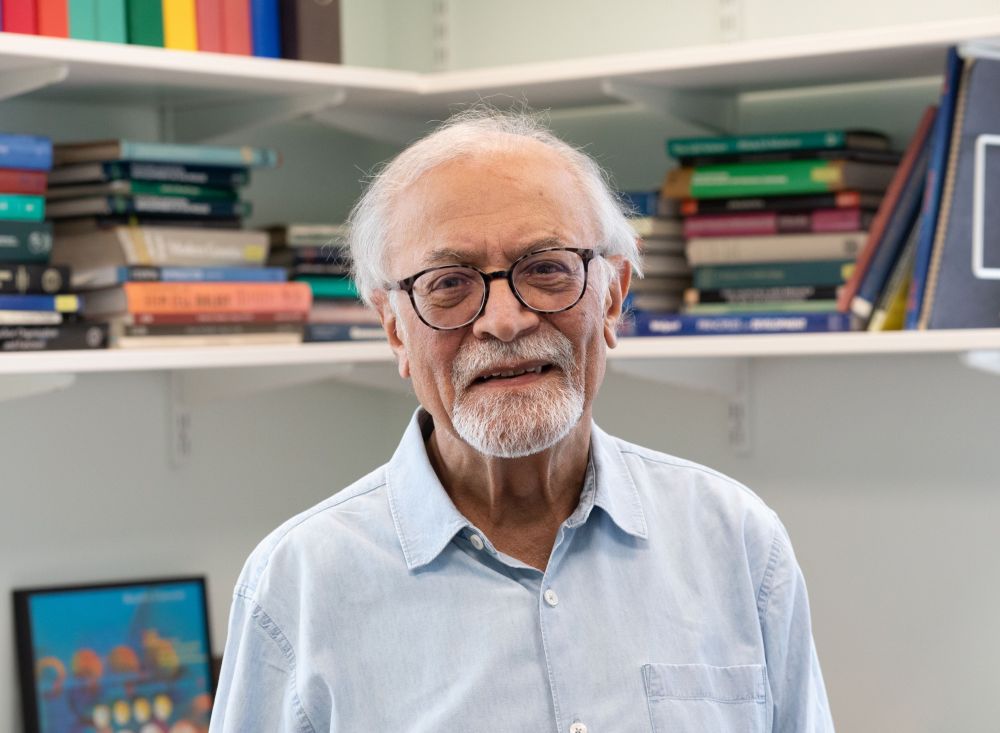
🌟Congratulations to Azim Surani @gurdoninstitute.bsky.social @cam.ac.uk for receiving the 2025 Kyoto Prize - Basic Sciences. Azim's research fundamentally advanced our understanding of developmental biology🔬🧬 www.gurdon.cam.ac.uk/kyoto-prize-...
#KyotoPrize #AzimSurani #DevelopmentalBiology
20.06.2025 10:46 — 👍 17 🔁 7 💬 0 📌 0
Our review on ➡️"Histone modifications in development" is out 🍾 in 🔖 Development @dev-journal.bsky.social urnal.bsky.social
Read more about histone tail and globular domain modifications during development: journals.biologists.com/dev/article/...
19.06.2025 10:22 — 👍 29 🔁 10 💬 0 📌 0
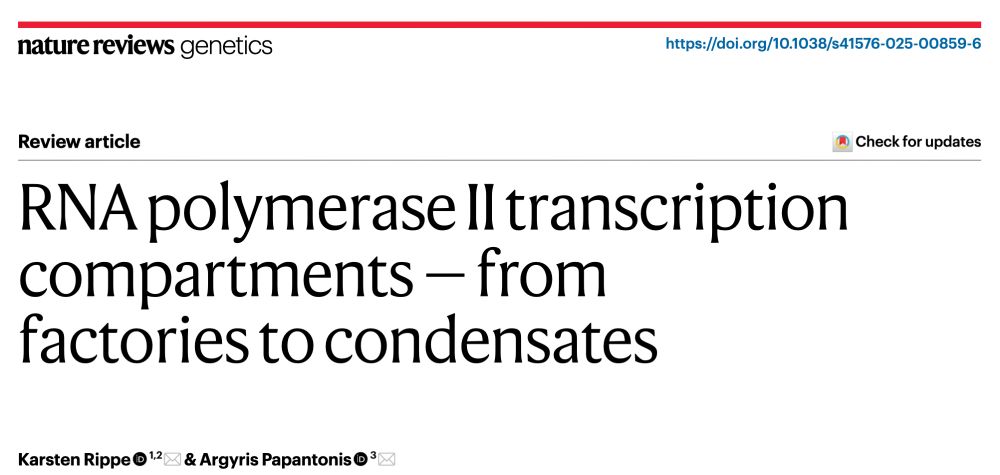
This is a piece that I and @karsten-rippe.bsky.social discussing a lot, and a topic that is very close to my heart. The editors @naturerevgenet.bsky.social gave us the stage to do so, and the final version of our review is now available under this link: rdcu.be/erP1u
A short thread follows 1/n
19.06.2025 16:37 — 👍 95 🔁 39 💬 3 📌 2
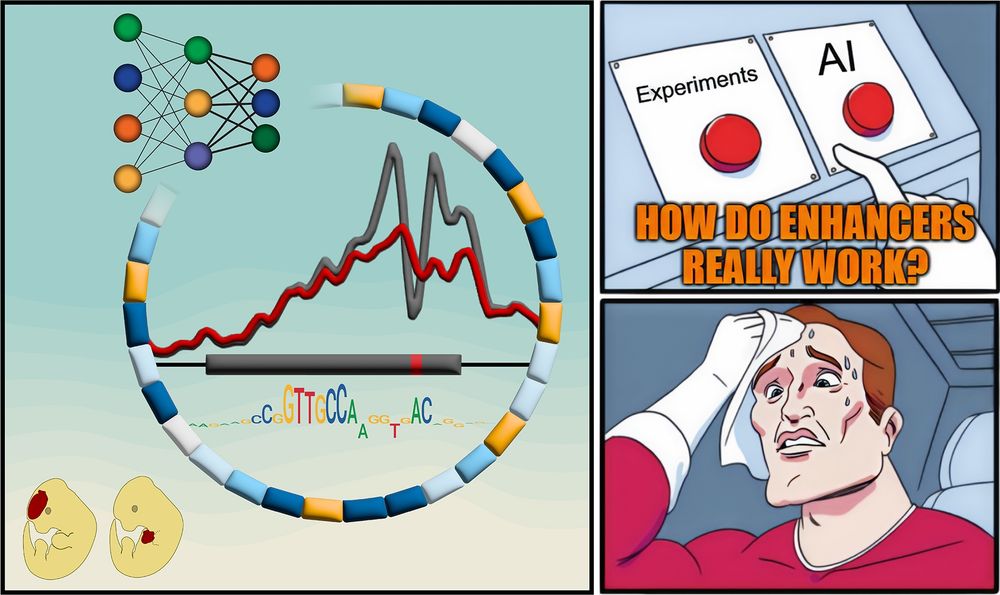
A meme-style comic panel with three parts. Left: A stylized enhancer with a mutation, surrounded by colored blocks representing functional motifs, a neural network diagram, chromatin accessibility signal traces, and a sequence motif. Two cartoon mouse embryos below show different LacZ reporter activity patterns. Top right: A hand hovers anxiously between two red buttons labeled “Experiments” and “AI,” with the caption “HOW DO ENHANCERS REALLY WORK?” Bottom right: A sweating superhero wipes his forehead, looking stressed about the difficult choice.
Textbooks: “Enhancers are just a bunch of TFBSs”
But how do they REALLY work?
New paper with many contributors here @berkeleylab.lbl.gov, @anshulkundaje.bsky.social, @anusri.bsky.social
A 🧵 (1/n)
Free access link: rdcu.be/erD22
18.06.2025 17:55 — 👍 165 🔁 80 💬 2 📌 5
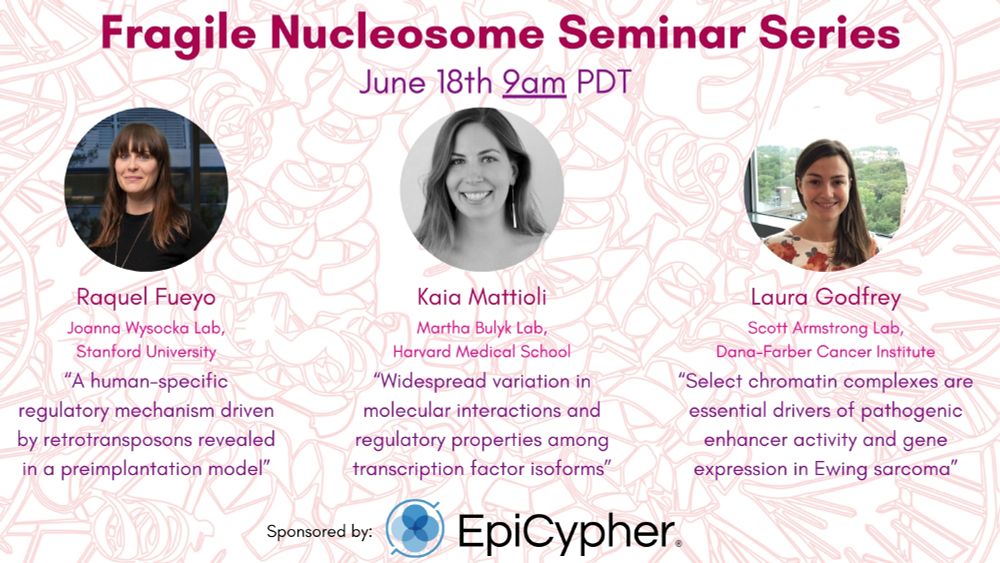
Join us next Wed, for three amazing ECR researchers_ @fueyoraquel.bsky.social, @kaiamattioli.bsky.social and Laura talk about their work in #FragileNucleosome seminar series!
In case you haven't joined any of the previous 2025 sessions, here is registration link:
us06web.zoom.us/webinar/regi...
14.06.2025 09:54 — 👍 20 🔁 9 💬 0 📌 5
Clinical Research Group 5002: "Deciphering Genome Dynamics for Subtype-specific Therapy in Pancreatic Cancer" at the University Medical Center Göttingen, funded by the @dfg.de. https://gccc.umg.eu/en/cru-5002/
IMPRS-GS PhD Student at Papantonis Lab, University Medical Center Göttingen | BSc. Biochemistry and Biotechnology, UTH | MSc. Stem Cells and Regenerative Medicine, AUTH
Transposons, chromatin, development. Group leader @ the MRC LMS in London and UKRI FLF. Mum of 2, she/her. Www.perchardelab.com
Official Bluesky account of ESHRE the European Society of Human Reproduction and Embryology.
www.eshre.eu
Viruses & Proteases, Head of Infection Biology Unit, Deutsches Primatenzentrum, @primatenzentrum.bsky.social, Decoding viral entry, Tracking SARS-CoV-2 variants, https://linktr.ee/snpoehlm, Views are my own
Join us as we discuss the latest stem cell research, policy, and news with field experts. Brought to you by @stemcell.com.
🔗 stemcellpodcast.com
Dad x 2, husband, son, brother, computational biologist, genome scientist, associate professor at la jolla institute for immunology (LJI) and UCSD https://www.lji.org/labs/ay/
Epigenetic Inheritance, Neuroscience & anything biology-related
https://www.odedrechavilab.com/
https://www.qedscience.com
Organizer of “The Woodstock of Biology”
TED: https://shorturl.at/myFTY
Huberman Lab Podcast: https://youtu.be/CDUetQMKM6g
Biochemist and structural biologist with a love for chromatin. Group leader at the Hubrecht Institute.
Assistant Professor @ Stanford Genetics & BASE Initiative. Mapping the regulatory code of the human genome to understand heart development and disease. www.engreitzlab.org
Liver everything, human pluripotent stem cells, organoids, cell based therapy believer, opinions are my own.
Stem cell biologist intrigued by the developmental functions of epigenome regulators and how they can go awry. Father of two beautiful kids. Former Tour de France contender (in his dreams). Opinions expressed here are my own.
https://www.stadtfeldlab.com
Genetics faculty @ Yale: genetics, genomics, chromatin, reproduction, and evolution. Or really, just trying to see where the next result takes us.
Stem cell and mechanobiologist at the Max Planck Institute of Molecular Biomedicine and University of Helsinki
Studying cellular #stress responses, particularly #senescence and its impact on #immune response, #ageing and #cancer, #tumorigenesis at Cancer Research UK CI @cruk-ci.bsky.social, University of Cambridge @cam.ac.uk
Website: naritalab.com
postdoc @ http://debaerelab.com @ https://fungenlab-ugent.be | 3D genome, gene regulation, structural variation | retina, neurodev, space!
Max Planck Research Group Leader at MPI for Molecular Genetics, Berlin, Germany. working on:
RNA | Transposable Elements | Genome Evolution
https://www.helmholtz-munich.de/en/ife
Scientist & Communicator. Fascinated by cells across scales - 🌎, 🔬and ⏳. PI @GIMM, EMBO member. Former Director @IGC, PD @Cambridge University, PhD @UCL/IGC. My motto: "Science from all for all". Mom of 2 wonderful girls. Views are my own.
DNA and RNA modifications in the brain











